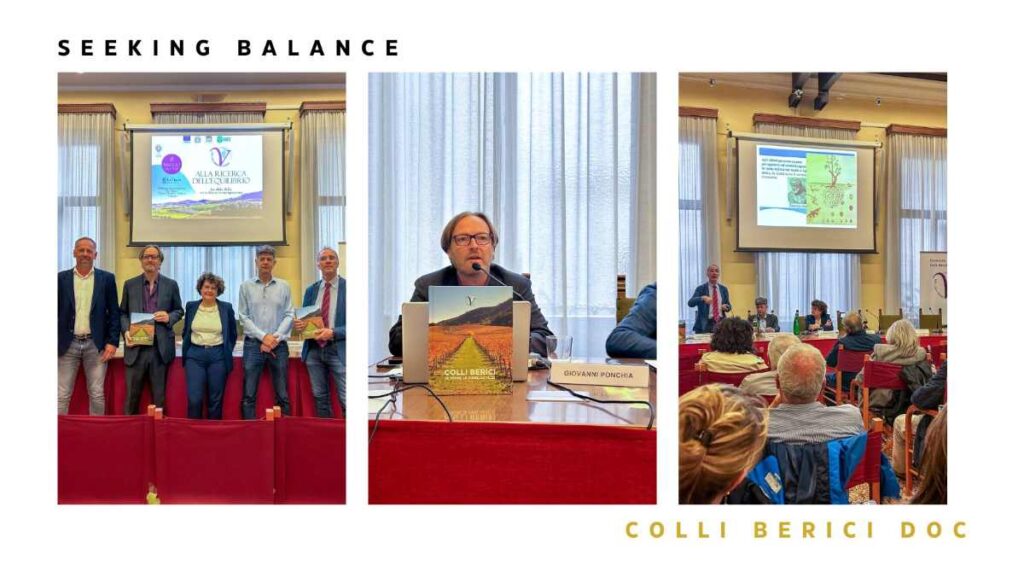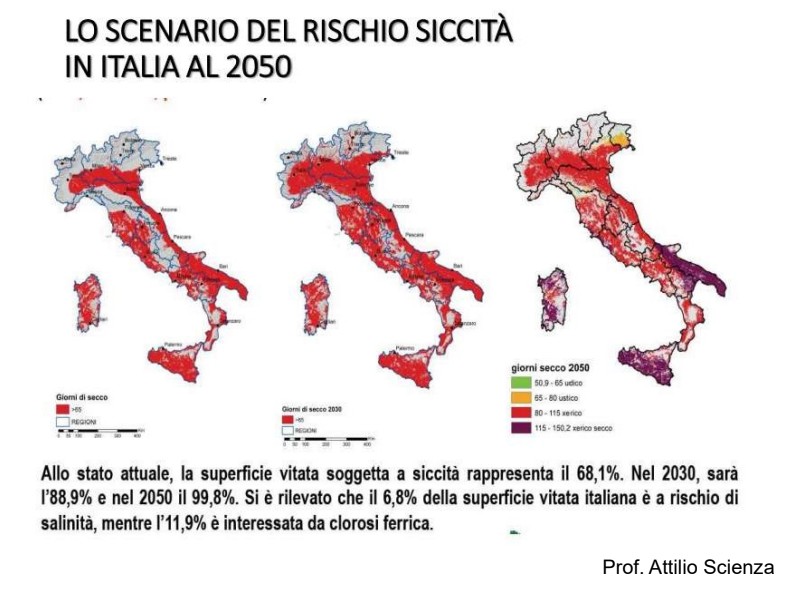The Challenges of Contemporary Viticulture.
Vicenza, the city of Palladio in Veneto, northern Italy, was the venue for the conference “In Search of Balance—hursday, May 8, at the International Library “La Vigna,” provided an opportunity to delve into the current state of viticulture, analyzing emerging critical issues and prospects.
The discussion opened with an analysis of the main contemporary challenges, followed by an overview of solutions developed through research and field experimentation, aimed at addressing the effects of climate change and optimizing vineyard management, from soil to canopy.

Conference Speakers
Giovanni-Battista Tornielli – University of Padova: “The State of the Art of Viticulture Research”
Professor Tornielli presented a detailed analysis of the main challenges currently facing viticulture, with particular attention to soil diversity and the impact of changing climatic conditions. The constant rise in temperatures leads to an acceleration of maturation, which has significant effects on both the grape and the finished wine:
- Excessive sugar accumulation, resulting in higher alcohol content in wines.
- Rapid decline in acidity and increase in the pH of the must.
- Mismatch between technological, phenolic, and aromatic ripening of the grape.
Measures to mitigate water stress
Tornielli also discussed several practices to reduce plant stress and limit water consumption, essential in the context of increasing drought:
- Controlling vegetative growth (limiting yields).
- Reducing planting density.
- Carefully selecting more resistant varieties and rootstocks.
- Enhancing the soil’s water retention capacity.
- Managing cover crops.
- Using biostimulants and resistance inducers.
- Applying precision technologies for irrigation monitoring and management, such as thermographic analysis

Ermanno Murari – Vivai Cooperativi Rauscedo: “From Head to Roots: Next-Generation Rootstocks”
Murari opened his presentation by quoting Democritus: “The plant is a man with its head in the ground,” to emphasize the root system’s crucial role in the vine’s health and productivity. From here, he developed his reflections on the new M-series rootstocks and the need for resistant varieties, especially in Veneto. He revisited some of the points raised by Tornielli, focusing on the effects of temperature increase:
- Anticipation of phenological cycles.
- Changes in maturation dynamics.
- Alteration of the compositional profile of grapes (sugars, acidity, polyphenols, aromas).
Murari then highlighted the numerous advantages offered by next-generation rootstocks, which meet the needs of a more resilient and sustainable viticulture:
- Greater resistance to drought, leading to water savings.
- Hardiness and tolerance to adversities.
- Efficient nutrient absorption, with reduced fertilizer usage.
- Resistance to salinity and lime (less need for iron chelates).
- Resistance to nematodes that carry viruses, promoting longer vineyard lifespan.
- Easier grafting, resulting in higher yields at nurseries and less waste.
- Moderate vigor, reducing the need for pruning and improving grape quality.
- Replacement of problematic rootstocks (e.g., 161-49 decline).
- Adaptability to new soil types.
New M Rootstock
The project for M-series rootstocks began in 1981, following years of detailed studies and analysis. It wasn’t until 2003 that the first experimental vineyards were planted. These rootstocks feature innovative characteristics that make them particularly suitable for addressing the new climate challenges, representing a key resource for the evolution of viticulture.
Facing increasingly impactful climate change, a growing awareness is emerging: production regulations must become more flexible, allowing viticulturists to adopt the most suitable agronomic and varietal solutions for the new conditions.